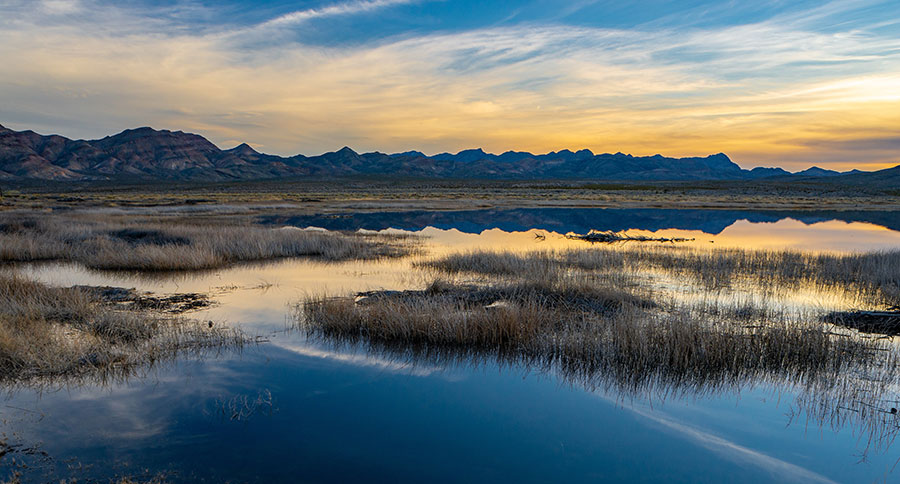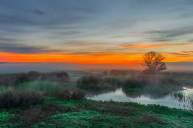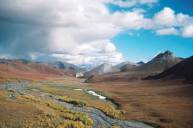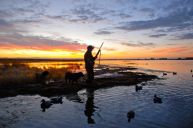Over 1.4 million acres may open to sportsman-oriented recreation soon.
The Trump administration has announced plans to expand access for public hunting and fishing to over 1.4 million acres of national wildlife and national fish hatchery lands. The plan is to make it happen in time for this hunting season.
The U.S. Department of the Interior announced the bold plan last week which could affect 74 national wildlife refuges and 15 fish hatcheries. In total, the proposal could open new fishing areas and big game hunting opportunities for sportsmen and women in 46 states.
U.S. Interior Secretary David Bernhardt cited a commitment to expanding hunting opportunities in the United States and the benefits of hunting and fishing as a whole.
"President Trump is committed to expanding public access on public lands, and this proposal is executing on that directive by opening and increasing more access to hunting and fishing by the Fish and Wildlife Service at more stations and across more acres than ever before," Bernhart said. "Hunting and fishing are more than just traditional pastimes as they are also vital to the conservation of our lands and waters, our outdoor recreation economy, and our American way of life. These refuges and hatcheries provide incredible opportunities for sportsmen and women and their families across the country to pass on a fishing and hunting heritage to future generations and connect with wildlife."
By providing more hunting access on public lands, the Department of the Interior is also hoping they can combat the problem of hunter numbers decreasing, which many claim are due to fewer opportunities and loss of private lands.
Other state agencies and conservation groups are already supporting the idea of new hunting and fishing opportunities.
"The Association of Fish and Wildlife Agencies is delighted by this announcement of a continuing commitment by the Department of the Interior to expanded access for regulated hunting and angling, on National Wildlife Refuges, in partnership with state fish and wildlife agencies," Ed Carter, President of the Association and Executive Director of the Tennessee Wildlife Resources Agency said. "We need to get people outside to enjoy the lands and waters, and fish and wildlife resources, of our great nation. This is an important step in that direction!"
In their press release, the Department of the Interior also cited the economy, and specifically the importance of nearly $156 million that is spent every year on hunting and fishing activities. It was a big factor in the decision.
What does this mean for these areas?
The Department of the Interior has already announced plans to work with state wildlife agencies on adjusting hunting and fishing regulations to better align for the proposed changes. In many cases, the changes are simply an expansion on what was already in place.
For instance, in Oklahoma's Tishomingo National Wildlife Refuge, the plan is to open an additional 16,000 acres to feral hog and turkey hunting. These areas were already open to hunting for other species.
Another example is the Clarks River National Wildlife Refuge in Kentucky, which is set to see an expanded date range for coyote hunting.
For other areas, it means the American public will be able to experience hunting and fishing on popular federal lands previously closed to such activities. In the Hackmatack National Wildlife Refuge in Illinois and Wisconsin, new waters will open to fishing that had never been previously accessible. Wisconsin's Green Bay National Wildlife Refuge will open to deer hunting for the first time ever under the proposal as well.
Some of the proposed changes will see gigantic swaths of land be dedicated to big game hunting. One proposal is to open 24,437 acres of Wyoming's Seedskadee National Wildlife refuge to deer and elk hunting. Other changes are small, like Maryland's Patuxent Research Refuge, which is seeing a modest expansion of 59 acres to big game hunting. Every acre counts, right?
The entire list of areas that could be affected by the proposal can be read on the U.S. Fish and Wildlife Service's website here.
Will it actually happen?
Keep in mind, none of this is set in stone yet, but considering they're getting the backing of state agencies like the Tennessee Wildlife Resources Agency and independent groups like Delta Waterfowl, we're guessing it has a good chance of going through.
The Department of the Interior plans to put the proposal up online, with a chance to accept public comments, for 45 days on Regulations.gov.
At the time of this writing, we couldn't find the proposal online yet.
Notable possible changes
The list of expansions and notable changes to wildlife refuge regulations changes is pretty extensive, and covers 74 refuge areas and 15 fish hatcheries. We went over the list and picked out some of the more notable ones we think people are likely to take a real interest in.
- Arizona: Buenos Aires National Wildlife Refuge: expanded weapons and seasons for upland and big game over 104,086 acres.
- Colorado: Hotchkiss and Leadville National Fish Hatcheries: open to fishing and Leadville open also to migratory game bird, mule deer and elk hunting on 3,072 acres.
- Florida: Okefenokee National Wildlife Refuge: expanded weapons and seasons for big game hunting on over 3,800 acres.
- Massachusetts: Monomoy National Wildlife Refuge: open migratory game bird and coyote hunting on over 7,200 acres for the first time ever.
- Minnesota: Tamarac National Wildlife Refuge: 42,314 acres already open to hunting expanded for wild turkey, bobcat, crow, rail and mourning dove hunting.
- New Mexico: Dexter Nation Fish Hatchery: will open to migratory game bird and upland game on 461 acres.
- Oklahoma: Deep Fork National Wildlife Refuge: 7,000 acres already open for hunting expanded to include geese, merganser and coot hunting.
- South Carolina: Orangeburg National Fish Hatchery: Open to fishing for first time ever.
- Virginia: Harrison Lake National Fish Hatchery: Open to fishing for first time ever.
- Washington: Entiat, Leavenworth, Little White Salmon and Spring Creek Fish Hatcheries: Open to fishing for first time ever.
- Wisconsin: Iron River National Fish Hatchery: open migratory game bird, upland game, and big game for first time ever.
We will keep an eye on this proposal, so watch for updates as things move through the legislative process.
For more outdoor content from Travis Smola, be sure to follow him on Twitter and check out his Geocaching and Outdoors with Travis Youtube channels.
NEXT: WHAT HUNTING, FISHING OR CAMPING THINGS ANNOY YOU THE MOST WHEN PEOPLE DO THEM?
WATCH




